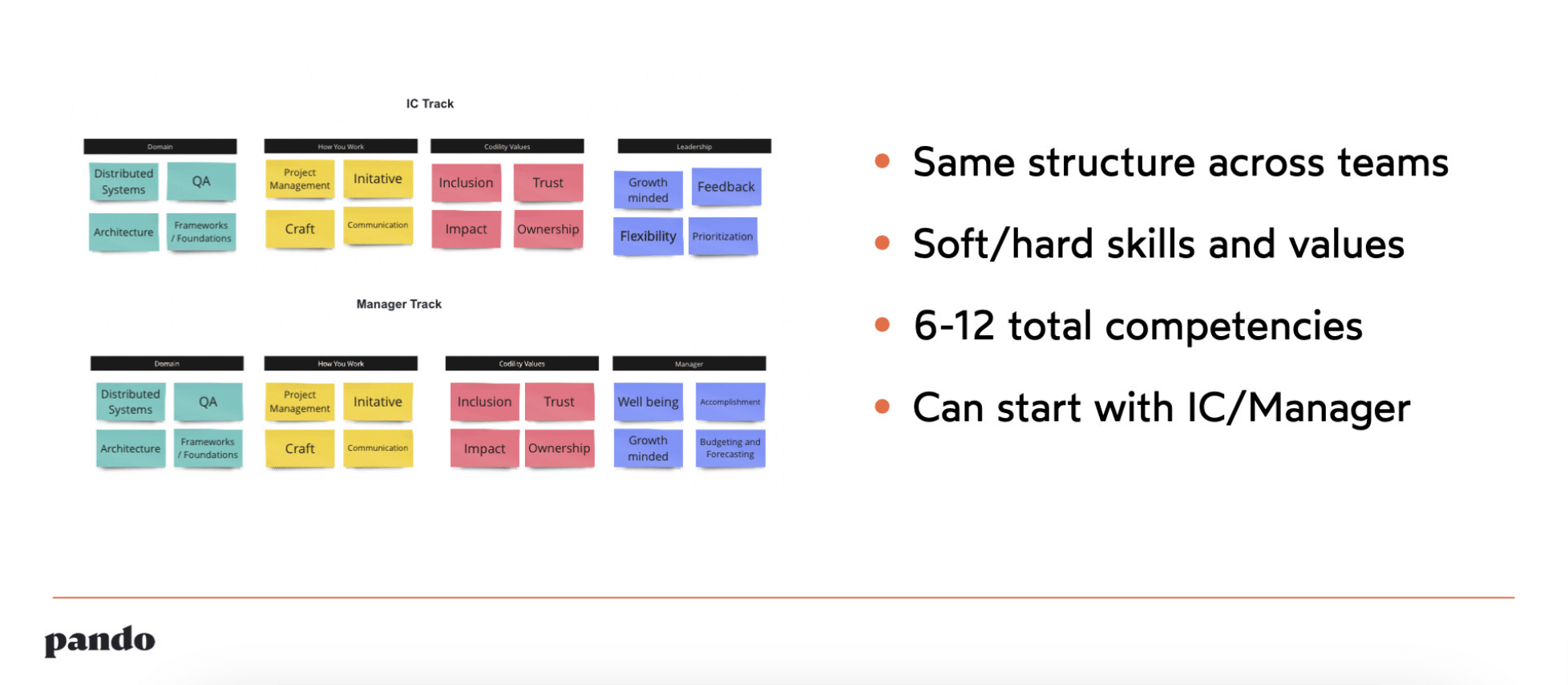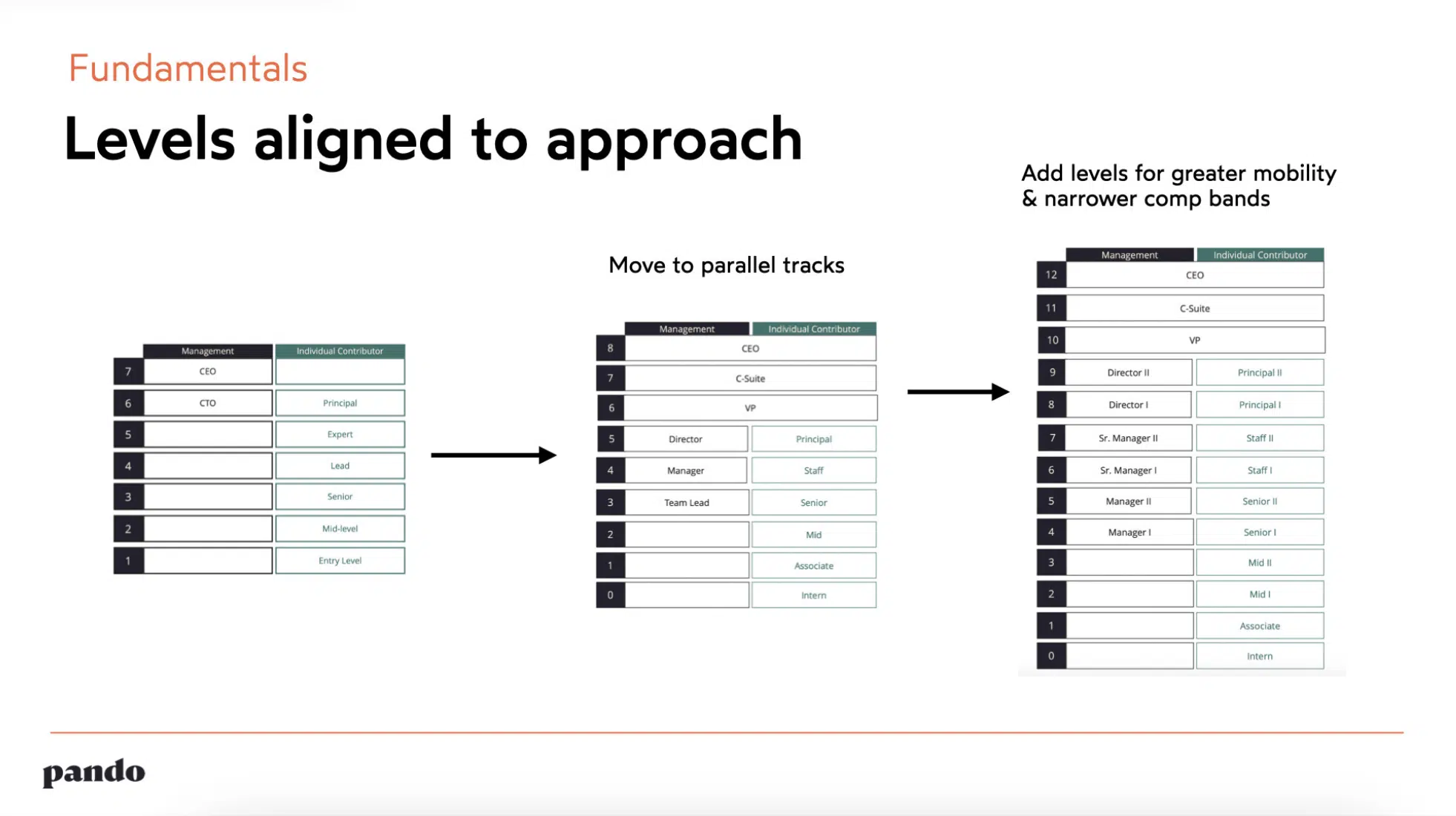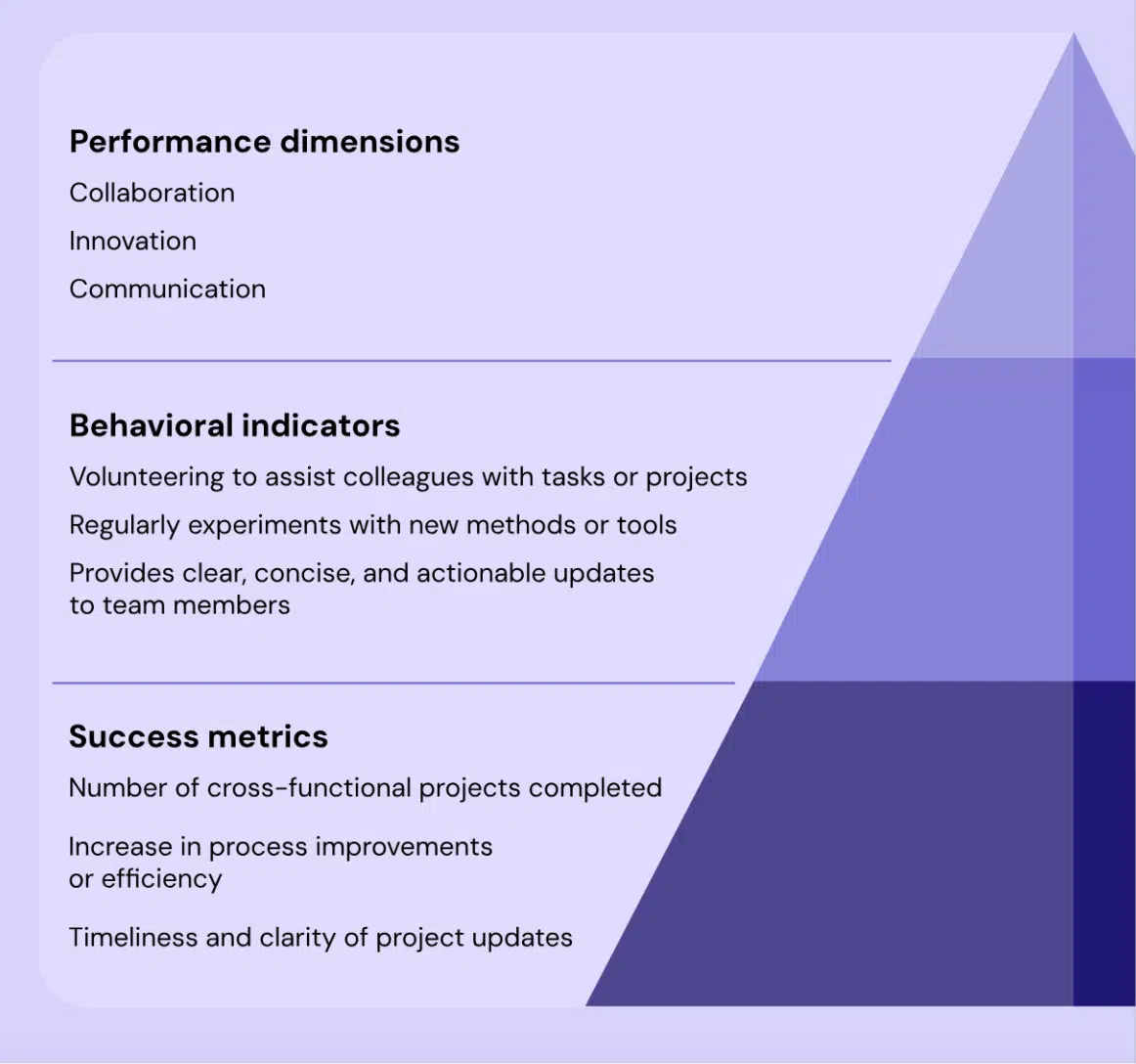Performance management is one of those HR topics that makes everyone — managers, employees, and even HR teams — groan. Why? Because it’s often treated as a checkbox exercise instead of a powerful lever for performance, growth, and engagement. And more often than not, that’s because managers haven’t been trained to do it well. That’s where performance management training for managers comes in.
It’s not just about giving them tools and frameworks; it’s about training them to understand the why behind performance management for managers, equipping them with the skills to coach effectively, and helping them sustain a high-performance culture year-round — not just during review season.
What do HR and L&D leaders need to focus on to make this happen? Let’s break it down with insights from a recent discussion with Barbra Gago, CEO and founder of Pando, and Caelan Cooney, Learning Strategist at Hone.
1. Build the foundations: Performance management done right
Before we even start talking about performance management training for managers, let’s get one thing straight: if your performance management system is broken, no amount of training will fix it. You need to address the structure first.
As Barbra Gago, CEO and founder of Pando, puts it:
We’ve nailed the art of hiring — rigorous recruiting, competency-based assessments, and reducing bias. But then what? Too often, we stop there, toss new hires over the fence, and say, ‘Go perform. We’ll check in a year.’ The real gap lies in the foundation — connecting the dots between how we hire and how we measure and unlock performance over time. If we want managers (and the company) to succeed, we have to stop glossing over this critical work.
Building an effective performance management system starts with designing a framework that feels fair, consistent, and actionable for managers and employees alike. This isn’t just about setting up a process for annual reviews — it’s about creating a system that makes performance conversations meaningful and effective.
Clear, transparent competencies and role expectations
One of the biggest mistakes organizations make is leaving job expectations vague or undefined. When employees don’t know how their work is being evaluated — or even what “good performance” looks like — frustration and disengagement follow.
Competency frameworks should be easy to understand, consistent, and actionable. They should answer questions like:
- What does success look like at this level?
- What skills and behaviors are critical for moving to the next level?
- How do individual roles align with organizational goals?
Competencies should also be tailored to your company’s unique culture and strategy. For example, if innovation is a core value, there should be competencies that reflect creativity, risk-taking, and problem-solving.
Leveling frameworks that are easy to use
Another essential component is having leveled frameworks that managers can use to fairly evaluate performance across teams. Without a shared understanding of how roles and performance evolve over time, evaluations become arbitrary.
These frameworks shouldn’t just sit in a document reviewed once a year; they need to be integrated into daily conversations, career development plans, and even hiring practices.
The key here? Simplicity and consistency. Managers need to see these frameworks as tools they can use, not hurdles to navigate. Here’s a free leveling tool created by Pando.
Systems for documentation and feedback
Documentation is often seen as a chore, but it’s critical for fairness and accountability in performance management. Continuously documenting performance moments — both strengths and growth opportunities — helps managers make informed decisions during formal evaluations.
Whether it’s using lightweight tools like Google Docs, formal HR software, or even shared team dashboards, HR leaders need to create systems that allow for:
- Easy tracking of performance milestones.
- Transparent documentation of feedback.
- Real-time input on goals and outcomes.
It’s not enough to encourage managers to document performance. You have to make it easy for them to do so without adding unnecessary administrative burden.
Feedback loops that actually work
Feedback loops are essential — not just between employees and managers, but also across teams and leadership levels. When feedback becomes a two-way street, it fosters a culture of openness and trust.
This means creating systems where:
- Employees feel comfortable sharing feedback upward.
- Managers get regular coaching and input on how they’re doing.
- Organizational leaders receive aggregated data to refine strategy.
A great performance management foundation isn’t static — it evolves based on feedback from all levels of the organization.
2. Train managers to be more than just scorekeepers
Once you’ve got the performance management system in place, the real work begins — empowering your managers to become the drivers of a high-performance culture. This isn’t about ticking boxes or just delivering an annual review; it’s about transforming managers into performance champions who guide, develop, and motivate their teams all year long.
Caelan Cooney, Learning Strategist at Hone, gives some advice:
You can have the most perfectly designed performance management system and still wonder why it’s failing. Here’s the truth: without training our managers on why it matters — to employees, teams, and the business — and how to use it effectively, it’s dead on arrival. Misalignment, no buy-in, and plain old user error will tank even the best system.
Let’s face it: no one becomes a great manager overnight. You can’t expect managers to instinctively know how to evaluate performance fairly, give constructive feedback, or coach their employees through their growth. These are skills that must be learned and continuously refined through performance management training for managers. And the consequences of not training them? Inconsistent performance assessments, demotivated employees, and ultimately a culture that feels disconnected from its goals.
But here’s the good news: with the right performance management training for managers, they can become the kind of leaders who not only measure performance but also actively cultivate it. Here’s how you can make that happen:
Equip managers with a clear framework through Performance Dimensions Training
The first step in training managers is ensuring they understand the performance dimensions they are expected to evaluate. These dimensions, whether they relate to adaptability, collaboration, or technical skills, should be clearly defined and consistently applied across the organization.
Training on these dimensions goes beyond theoretical concepts — it’s about real-world application. Managers need case studies and examples to see how these dimensions come to life. Interactive discussions and role-playing can help them assess how employees demonstrate different levels of a given competency, such as innovation. This is where managers learn to spot the subtle differences in behavior that align with the core competencies you’re measuring.
Through Performance Dimensions Training, managers are equipped with:
- A detailed breakdown of what each performance dimension means
- Clear success metrics to understand what exceptional, adequate, and poor performance look like
- Behavioral indicators for each performance level, helping them identify performance across the spectrum
By reviewing real-world examples, like employees demonstrating different levels of innovation, managers can practice writing performance notes that link observable behaviors directly to the competency. This foundation ensures that managers aren’t just evaluating abstract qualities but are grounded in concrete, measurable behaviors.
Pre-calibrate with Frame of Reference Training
Consistency is key to a fair performance management system. If you see inconsistent ratings across teams or even among managers within the same team, it’s clear that they aren’t aligned on what different performance levels mean. Frame of Reference Training is the solution.
This training helps managers calibrate their rating scales, ensuring they’re on the same page when it comes to evaluating employee performance. Through case study analysis, managers can practice evaluating employee scenarios, comparing their ratings, and discussing where disagreements occur. This allows managers to align on standards and reduce variability in how they interpret and apply ratings.
By ensuring that every manager understands how to properly apply the rating scale and behavioral anchors, you can boost fairness and consistency, ensuring that all employees are assessed with the same standards in mind.
Combat bias with Rater Error & Bias Training
Even with the best of intentions, biases inevitably creep into performance reviews. Whether it’s recency bias (where a manager is overly influenced by recent events), affinity bias (favoring those you have a personal connection with), or halo effect (overrating someone due to one standout attribute), these biases can skew the objectivity of a review.
That’s why managers need Rater Error & Bias Training. In this training, they learn to recognize their own biases and take proactive steps to mitigate them. Documenting performance throughout the year (not just at review time) is a simple yet powerful strategy to combat bias. By keeping a running log of behavioral observations, managers can base their assessments on a full picture of an employee’s performance, not just their most recent actions.
Training focus areas include:
- Recognizing common biases and their impact on evaluations
- Strategies for counteracting biases and conducting more objective reviews
- Real-world exercises in identifying and addressing biases in example scenarios
With these skills in hand, managers will be far more likely to offer fair and balanced feedback, grounded in facts rather than influenced by subconscious biases.
Create a systematic approach to performance tracking with Behavioral Observation Training
To truly evaluate performance effectively, managers need to observe it consistently — and not just when it’s review time. Behavioral Observation Training is critical for teaching managers how to systematically track and document performance throughout the year.
Effective behavioral observation doesn’t happen by accident. Managers must be trained to notice, record, and analyze specific behaviors that reflect the competencies and goals they are measuring. By capturing evidence of performance in real-time, managers ensure that their evaluations are based on consistent, factual data, not just their memory of past events.
Through this performance manager training for managers, they learn:
- Techniques for real-time observation, ensuring they notice and document the most relevant behaviors and actions.
- Best practices for documentation, emphasizing clarity, objectivity, and consistency.
- How to leverage performance tracking tools, such as digital tools like Pando, that streamline documentation and ensure accuracy.
By practicing these techniques and tools, managers can build an ongoing record of performance that provides a solid foundation for feedback and performance evaluations. Behavioral Observation Training ensures that managers don’t just rely on gut feelings or anecdotal evidence when rating employees. Instead, they’re equipped to back up their decisions with specific, well-documented instances of performance.
3. Go beyond reviews to sustain a high-performance culture year-round
Performance management cannot, and should not, be limited to annual reviews or even quarterly check-ins. To truly foster a high-performance culture, performance management must be integrated into every interaction. Managers are pivotal to this, and their role goes far beyond just completing performance reviews — they need to become ongoing coaches who drive growth, development, and engagement all year long.
Train managers to be coaches, not just evaluators
Most managers are promoted based on their individual performance and technical expertise, not their ability to guide and develop others. But coaching is essential to unlock employee potential and sustain a high-performance culture.
In this context, coaching training is invaluable. Use frameworks like the GROW model to teach managers how to guide employees through challenges, stretch projects, and career development conversations. This training helps managers go from being passive evaluators to active coaches who support their employees’ growth and success over the long term.
Key aspects of Coaching & Continuous Management Training include:
- Active listening to understand employee needs and challenges
- Asking powerful questions that encourage reflection and growth
- Helping employees navigate stretch projects that build skills while driving results
- Providing continuous feedback to encourage sustained improvement
When managers shift from a review-centric mindset to one focused on development and ongoing support, employees feel more engaged and motivated to improve continuously.
Reframe one-on-ones as performance conversations
One-on-ones are often seen as just a time to check in on tasks and projects. However, these meetings are a prime opportunity to discuss performance and provide meaningful feedback. Reframing one-on-ones as performance conversations can make a significant difference in how employees perceive their development.
Training managers to use one-on-ones for more than just status updates can help them:
- Track progress on goals in real-time, keeping employees on track and motivated
- Provide continuous feedback, addressing issues before they become larger problems
- Document key performance moments that can be referred back to during performance reviews
By making one-on-ones more than just a task list review, managers can ensure that they are actively helping employees grow and develop, rather than waiting for formal reviews to provide feedback.
HR and L&D as performance enablers through performance management training for managers
For performance management to truly work, HR and L&D leaders need to step into the role of enablers, not just policy enforcers. Your job isn’t just to create systems — it’s to equip managers with the skills, tools, and confidence to use those systems effectively. That’s where performance management training for managers comes in.
Because when managers are empowered to lead with clarity, fairness, and impact, they become more than just evaluators. They become performance champions who inspire their teams to achieve more than they thought possible. So, what’s your next move?















